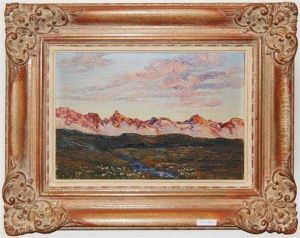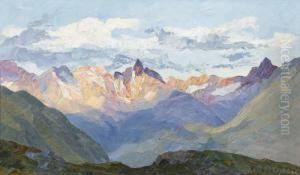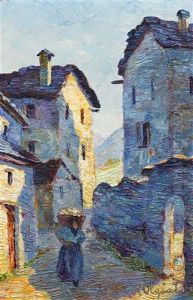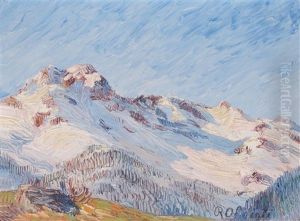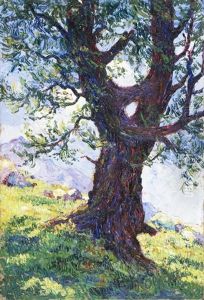Rodolfo Olgiati Paintings
Rodolfo Olgiati was a Swiss painter and graphic artist known for his contributions to abstract and concrete art movements. Born on May 8, 1910, in Poschiavo, Switzerland, Olgiati's early life was steeped in the cultural heritage of his native country, which would later inform his artistic vision.
During the 1930s, Olgiati pursued his artistic education at the Kunstgewerbeschule in Zurich, where he was exposed to the principles of the Bauhaus, which emphasized the unity of art, craft, and technology. This education set the foundation for his later work, which often focused on geometric abstraction and the exploration of color and form.
Olgiati's career developed amidst the backdrop of the mid-20th century, a period characterized by a multitude of art movements. He became an active member of the Swiss art community, associating with other artists and intellectuals who were interested in avant-garde and non-objective art. Olgiati's work evolved from figurative painting to a more abstract style, where he concentrated on the relationships between shapes and colors, creating compositions that were both harmonious and dynamic.
Throughout his life, Olgiati remained committed to his artistic pursuits, exhibiting his work in numerous shows and gaining recognition for his unique style. His graphic works, which include linocuts and woodcuts, also showcase his precision and attention to detail, as well as his love for the interplay of light and shadow.
Rodolfo Olgiati passed away on December 25, 1995, leaving behind a body of work that continues to be appreciated for its clarity, simplicity, and beauty. His contributions to the field of abstract art remain influential, and his legacy is preserved in the collections of various Swiss museums and galleries, as well as through the ongoing study and appreciation of his work by art historians and enthusiasts.
